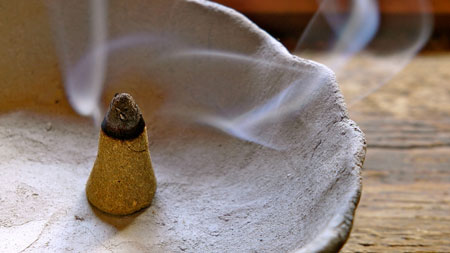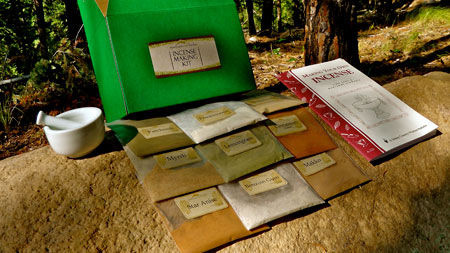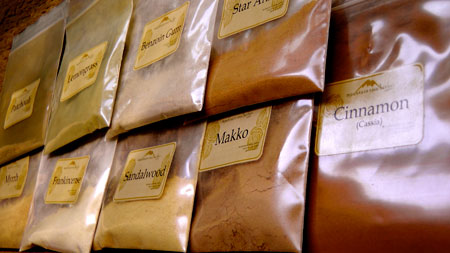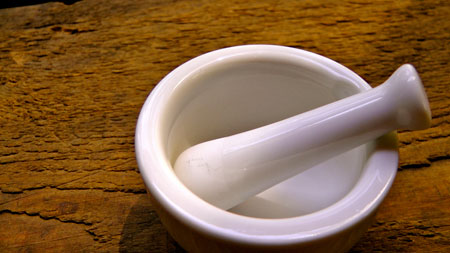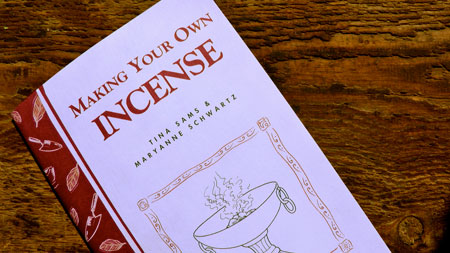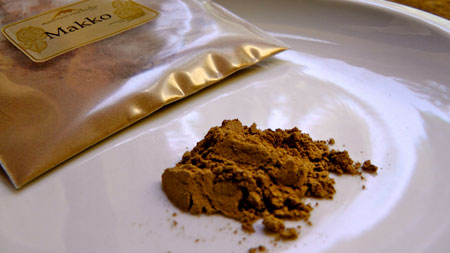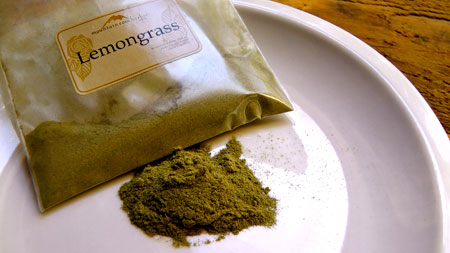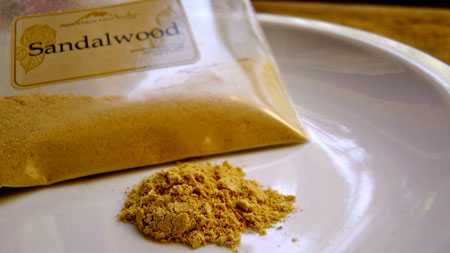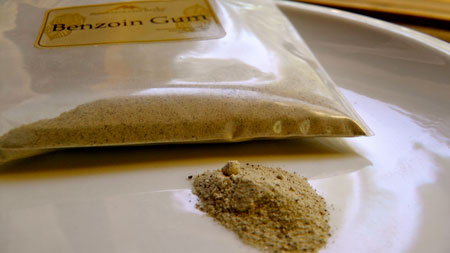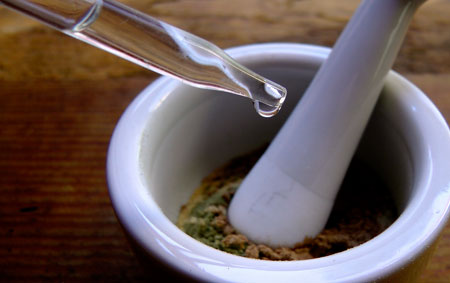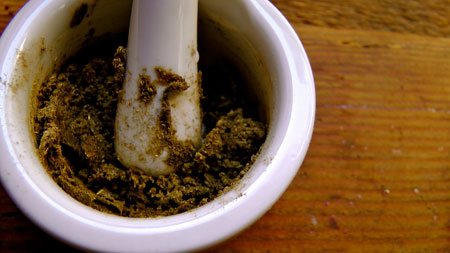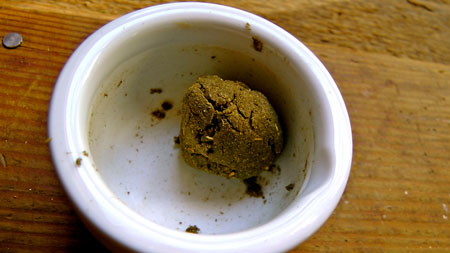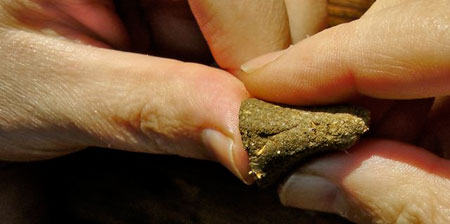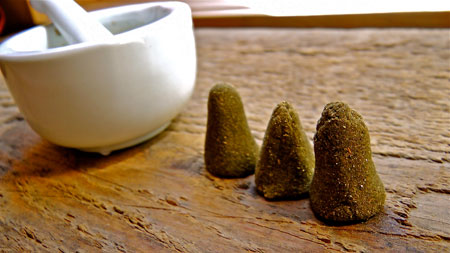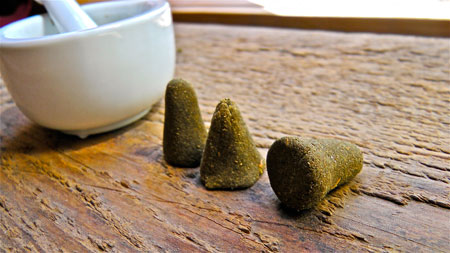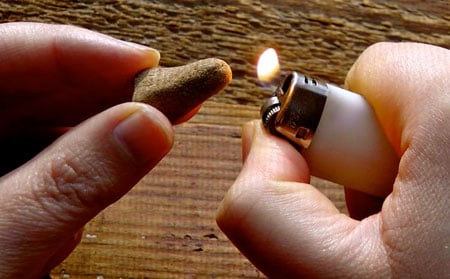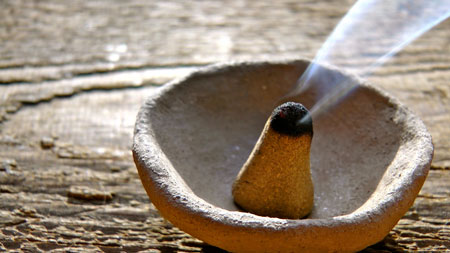
An Historical Perspective
The oils and aromatics mentioned in the Bible were more valuable than gold and silver. Israel’s King Hezekaih kept “the spices, and the precious ointment” (2 Kings 20:13) together with silver and gold in the royal treasure chamber.
Merriam-Webster’s Collegiate Dictionary defines anoint as “to apply oil to as a sacred rite, especially for consecration.” It has been suggested that the holy anointing oil described in Exodus 30:23-25 is a symbol of being set apart for special purposes in God’s kingdom. People and objects were anointed throughout the Bible: Aaron and his sons were anointed priests, the Tabernacle and all of its vessels were anointed before being put into service, and Saul and David were anointed to be kings. The Hebrew word for Messiah, Moschiach, means “Anointed One.” Jesus Christ was twice anointed with the oil of spikenard, which was so expensive that Judas was indignant that it wasn’t sold to raise money for the poor.
God mandated that the anointing oil be fragrant when He instructed Moses to add spices and fragrant oils to the base of pure olive oil. Psalm 45 informs us that the garments of the Messiah are fragrant with myrrh, aloes, and cassia. In one Bible translation of Philippians 4:18, Paul described gifts given as “a fragrant aroma, an acceptable sacrifice, well-pleasing to God.”
Incense was offered twice daily in the Tabernacle and later in the temple in Jerusalem. In Proverbs 27:9 we are told “ointment and perfume rejoice in the heart.” The New Testament suggests that incense offering represents the prayers of saints. In Revelation 5:8, “four beasts and four and twenty elders fell down before the Lamb, having every one of them harps, and golden vials full of odours, which are the prayers of saints,” the King James translators chose to translate the Greek word “thumiama” as “odours” rather than “incense”. According to Strong"s Exhaustive Concordance of the Bible, “thumiama” ritual use of incense represented God’s power over life and death in Numbers 16:46-48 wherein the High Priest Aaron walked through the congregation with it, stopping a deadly plague.
Therapeutic Effects of the
Twelve Oils of Ancient Scripture
Considering there are 12 oils mentioned numerous times throughout the Holy Scriptures it is no coincidence that God has given these oil to mankind to sustain a healthy body. These oils alone address all the body systems and appear to be prophetic when considering the volatile times fast approaching God’s people. A brief synopsis of the oils will be presented to further educate those interested in taking responsibility for their own health.
Aloes/Sandalwood – (Santalum album)
“And there came also Nicodemus, which at the first came to Jesus by night, and brought a mixture of myrrh and aloes, about a hundred pound weight” (John 19:39). Many botanists believe that aloes was derived from sandalwood, one of the oldest incenses known to man. Its 4,000-year history includes use as a carved wood as well as distillation for its sweet-, woody-, and fruity-scented oil. The great quantity of myrrh and aloes used in preparing Christ’s body for burial was indicative of respect.
Action: Sandalwood is high in sesquiterpenes that have been researched in Europe for their ability to stimulate the pineal gland and the limbic region of the brain. The pineal gland is responsible for releasing melatonin, a powerful antioxidant that enhances deep sleep. Sandalwood is similar to Frankincense oil in its support of nerves and circulation.
Indications: Bronchitis (chronic), herpes, cystitis, and skin tumors.
Uses: May help with cystitis and urinary tract infections. It may also be beneficial for acne, depression, pulmonary infections, menstrual problems, nervous tension, and skin infection. It may help dry or dehydrated skin.
Emotional Uses: May unlock emotional trauma fro DNA of cells, oxygenate the pineal and pituitary glands, thus improving attitude.
Cassia – (Cinnamomum cassia)
“All thy garments smell of myrrh, and aloes, and cassia, out of the ivory palaces, whereby they have made thee glad” (Psalm 45:8). Two of the oldest known spices in the world are cinnamon and cassia. It was an ingredient in the holy anointing oil and the incense that was burned daily in the temple. While its aroma is similar to cinnamon, cassia is chemically and physically quite different.
Action: Antibacterial, antiviral, and anti-fungal.
Traditional Uses: The British have used this oil specifically for flatulent dyspepsia or colic with nausea. In Chinese medicine it is used particularly for vascular disorders. Cassia oil is among the most antiseptic of essential oils.
Cedarwood – (Cedrus atlantica)
“Then the priest shall command to take for him who is to be cleansed two birds alive and clean and Cedarwood and scarlet material and hyssop.” (Leviticus14:4). The cedars of Lebanon were used to build Solomon’s Temple and Herod’s Temple where Christ taught. Cedar was an integral part of two biblical purification rituals – one for lepers and another for those who were impure from touching a dead body. Cedar was noted for its incorruptibility; and in ancient times, clothing was anointed with cedar to protect if from humidity.
Action: Mildly antiseptic, Cedarwood may be effective against tuberculosis, bronchitis, gonorrhea, urinary infections, and skin disorders such as acne and psoriasis. It can reduce hardening of the artery walls. It also may help stimulate the pineal gland, which releases melatonin, an antioxidant hormone associated with deep sleep.
Traditional Uses: Cedarwood may help with acne, anxiety, arthritis, congestion, coughs, cystitis, dandruff, psoriasis, respiratory system, sinusitis, skin diseases and fluid retention.
Emotional Uses: It is high in sesquiterpenes that can stimulate the limbic region of the brain (the center of our emotions). It is recognized for its calming and purifying effects.
Cypress – (Cupressus sempervirens)
“He hewest him down cedars, and taketh the cypress and the oak, which he strengthen for himself among the trees of the forest” (Isaiah 44:14). The cypress tree is renowned for its durability. The sturdy cypress doors of the St. Peter’s in Rome, for example, show no signs of decay, even after 1,200 years! The mighty cypress groves of Lebanon were described in the Apocryphal Book of Ecclesiasticus as trees “which groweth up to the clouds” (50:10). Some Bible scholars believe that cypress may be the “gopher wood” used to build Noah’s Ark.
Action: Improves circulation and supports the nerves and intestines. Anti-infectious, antibacterial, anti-microbial (causative agent of tuberculosis), and strengthens blood of capillaries.
Traditional Indications: Arthritis, bronchitis, circulation, cramps, hemorrhoids, insomnia, intestinal parasites, menopausal problems, menstrual pin, pancreas insufficiencies, pulmonary infections, rheumatism, spasms, throat problems, varicose veins, and fluid retention.
Historical Use: This oil may be beneficial for asthma, strengthening blood capillary walls, reducing cellulite, circulatory system, strengthening connective tissue, coughs, edema, improving energy, gallbladder, bleeding gums, hemorrhaging, laryngitis, liver disorders, muscular cramps, nervous tension, nose bleeds, and ovarian cysts. It is outstanding when used in skin care, lessening scar tissue.
Emotional Use: Cypress influences, strengthens, and helps ease the feeling of loss. It creates a feeling of security, grounding, and helps heal emotional trauma.
Frankincense- (Olibanum-Boswellia carteri)
“Who is this that cometh out of the wilderness like pillars of smoke, perfumed with myrrh and frankincense, with all powders of the merchant?” (Song of Solomon 3:6).
An ancient synonym for frankincense is “olibanum”, derived from the Latin Olium libanum (oil from Lebanon). Because frankincense symbolizes divinity, it was one of the three gifts given to the Christ child. The temples of antiquity were fragrant with the aroma of burning frankincense. It was well known for its healing powers during the time of Christ. “Used to treat every conceivable ill known to man”, frankincense was valued more than gold during the ancient times. Frankincense is now being researched and used therapeutically in European hospitals and is being investigated for its ability to improve human growth hormone production.
Action: Expectorant, anti-tumoral, immune-stimulant, anti-catarrhal, and anti-depressant.
Traditional Indications: Asthma, depression, and ulcers. Supports the immune system. It increases the activity of leukocytes in defense of the body against infection.
Historical Uses: This oil may help with allergies, bites (insect and snake), bronchitis, cancer, respiratory infections, diphtheria, headaches, hemorrhaging, herpes, high blood pressure, inflammation, stress, tonsillitis, typhoid, and warts.
Galbanum – (Ferula gummosa)
“And the Lord said unto Moses, “take unto thee sweet spices, stacte, and onycha, and galbanum; these sweet spices with pure frankincense; of each there shall be a like weight” (Exodus 30:34). There is an interesting suggestion in the Jewish Talmud as to why this powerful, less-than-fragrant resin was used in the holy incense: “Every communal fast that does not include sinners of Israel is not a fast.” This has been linked to the fact that incense included spices or perfumes with lovely fragrances, but was not complete without one spice, galbanum, with its earthy odor. Also during Biblical times this oil was used for its medicinal properties.
Action: Anti-infectious, anti-inflammatory, stimulant, supporting to the kidneys and menstruation, analgesic, light antispasmodic, and strengthening for the body.
Indications: Asthma, inflammation, poor circulation and wounds.
Historical Uses: May help with abscesses, acne, asthma, bronchitis, chronic coughs, cramps, cuts, indigestion, muscular aches and pains, nervous tension, rheumatism, scar tissue, stress, wrinkles, and wounds.
Hyssop – (Hyssopus officinalis)
“Purge me with hyssop, and I shall be clean; wash me, and I shall be whiter than snow” (Psalm 51:7). The hyssop plant was used during the exodus from Egypt to dab the Hebrews’ doorposts with lamb’s blood, protecting them from the plague of death. Hyssop may be the most difficult biblical plant to identify because so many possibilities have been suggested. However, because hyssop (along with cedar) was used in purification rituals, modern-day hyssop with the chemical constituent carvacrol, which has antibacterial properties, make it a likely choice.
Action: Anti-asthmatic, anti-catarrhal, anti-infectious, anti-inflammatory, antioxidant, anti-parasitic, antiseptic, antispasmodic, antiviral, astringent, decongestant, diuretic, mucolytic, and sedative.
Traditional Indications: Arthritis, asthma, bruises, respiratory infections, coughs, cuts, dermatitis, indigestion, fatigue, nervous tension, parasites (expelling worms), rheumatism, sore throats, viral infections, and wounds.
Historical Uses: This oil may help with colds and coughs, digestions, fever, gout, regulating lipid metabolism, raising low blood pressure, clearing lungs, discharging mucus, strengthening and toning the nervous system, preventing scarring, and viral infections.
Emotional Uses: Hyssop may be beneficial for anxiety and may also aid concentration and alertness by stimulating and clearing the mind.
Myrrh – (Commiphora myrrha)
“I have perfumed my bed with myrrh, and aloes, and cinnamon” (Proverbs 7:17). Christ was given myrrh at His birth; and along with aloes, it was used in preparing His body for burial. Myrrh was included in the holy anointing oil and was well known to the ancient perfumers. From Ester 2:12, one learns that the candidates from which King Ahaseuerus was to pick his queen were prepared by anointing: “six month with oil of myrrh, and six months with sweet odours. The Arabian people of antiquity used myrrh for a variety of skin conditions.
Action: Anti-infectious, antiviral, parasitic (worms), hormone-like, anti-inflammatory, soothes skin conditions, anti-hyperthyroid, and supports immune system.
Traditional Indications: Bronchitis, diarrhea, dysentery, hyperthyroidism, stretch marks, thrush, ulcers, vaginal thrush and viral hepatitis.
Historical Uses: This oil may help asthma, athlete’s foot, candida, coughs, eczema, digestion, fungal infection, gingivitis, gum infections, hemorrhoids, mouth ulcers, ringworm, and sore throats, skin conditions (chapped and cracked), wounds, and wrinkles.
Myrtle – (Myrtus communis)
“Go forth unto the mount, and fetch olive branches, and pine branches, and myrtle branches, and palm branches, and branches of thick trees, to make booths, as it is written” (Nehemiah 8:15). When the Jews came out of Babylonian captivity, Kin Nehemiah commanded that they gather branches from four trees, including myrtle. To the ancient Jews, myrtle was symbolic of peace and justice. One of the promises to Israel for the future is that “instead of the brier shall come up they myrtle tree” (Isaiah 55:13)
Action: Expectorant, anti-infectious, liver stimulant, prostate decongestant, light antispasmodic, hormone-like for the thyroid and ovary, and a tonic for the skin.
Traditional Indications: Bronchitis, coughs, hypothyroidism, insomnia, thyroid hormone-like effects, prostrate decongestant, respiratory tract ailments, sinus infection, tuberculosis, and ureter infections. Researched by Dr. Daniel Penoel, Myrtle has been found useful for normalizing hormonal imbalances of the thyroid and ovaries, as well as balancing the hypothyroid. It has also been researched for its soothing effects on the respiratory system.
Historical Uses: Asthma, respiratory infections, cystitis, diarrhea, dysentery, dyspepsia (impaired digestion), flatulence, hemorrhoids, hormonal imbalances, support immune system, infections, infectious diseases, pulmonary disorders skin conditions (acne, blemishes, bruises, oily skin, psoriasis, etc.), and sinusitis. Use on children for chest complaints and coughs.
Onycha – (Styrax benzoin)
“And to the Lord said unto Moses, Take unto thee sweet spices, stacte, and onycha, and galbanum; these sweet spices with pure frankincense; of each shall there be a like weight." (Exodus 30:34). The great Jewish scholar Rashi said that onycha is a kind of root, while the Tulmud states it came from an annual plant. It is a possibility that styrax benzoin may be the plan source for onycha. Like frankincense and myrrh, benzoin is a resin.
Action: Anti-inflammatory, anti-oxidant, antiseptic, carminative, and expectorant.
Traditional Indications: Arthritis, gout, asthma, bronchitis and skin conditions.
Historical Uses: Poor circulation, rheumatism, flu, chills, colic, coughs, laryngitis, cuts, chapped skin, and inflamed and irritated skin conditions.
Emotional Uses: Traditionally known for its comforting and soothing properties for nervous tension and stress.
Rose of Sharon/Cistus – (Labdanum – Cistus Ladanifer)
“I am the rose of Sharon, and the lily of the valley” (Song of Solomon 2:1). In ancient times, the gum that exudes from this plant was collected from the hair of goats that had browsed among the bushes.
Cistus has been studied for its effect on cell regeneration.
Action: Anti-infectious, antiviral, antibacterial, powerful anti-hemorrhaging agent helps reduce inflammation.
Traditional Indications: Bronchitis, respiratory infections, urinary infections, wounds and wrinkles.
Historical Uses: Coughs, rhinitis, and may strengthen and support the immune system (due to phenol action).
Emotional Uses: Cistus may affect the upper part of the brain. It may also help quiet the nerves and calm the insomniac.
Spikenard – (Nardostachys jatamansi)
“And Jesus being in Bethany, in the house of Simon the leper, as he sat at meat, there came a woman having an alabaster box of ointment of spikenard, very precious, and she broke the box, and poured the ointment on his head.” (Mark 14:3). Spikenard was transported to the Holy Land in sealed alabaster boxes all the way from the Himalayan Mountains. When distinguished guest came visiting, the master of the house showed honor by breaking open the spikenard and anointing the guest. The Hebrew and the Romans used spikenard in the burial of their dead. This is why Jesus said of the woman who poured the precious spikenard oil on Him, “She is come aforehand to anoint my body to the burying” (Mark 14:8).
Action: Antibacterial, anti-fungal, anti-inflammatory, and skin tonic.
Traditional Indications: This oil is known for helping the treatment of allergic skin reactions.
Historical Uses: Candida, flatulent indigestion, insomnia, menstrual difficulties, migraine, nausea, rashes, staph infections, and tachycardia. According to Dietrich Gumbel, Ph.D. it strengthens the heart and circulatory system.
Emotional Uses: Relaxing and soothing to the mind.
